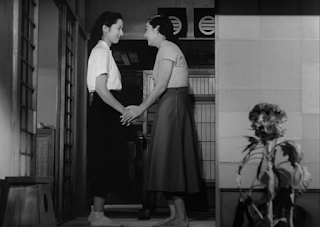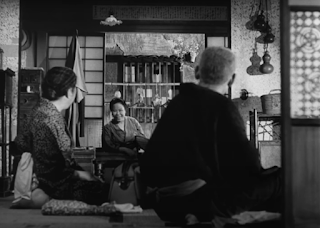Tokyo Story, the 1953 Japanese movie directed by Yushihiro Ozu is considered to be one of the greatest movies ever made.
Tokyo Story is about a simple journey. A journey that the aged parents make from the distant village to visit their children who have settled down in Tokyo. They spend a few days in Tokyo with their children and return back to their village.
Soon after their return, the mother dies – may be due to travel fatigue. The family assembles for her funeral. And once the funeral ceremonies are over, they all return , one by one, back to their day to day lives.
That’s it.
That is not even a story. Just a chain of events happening over a period of few days in a family. That’s it. A movie of just over two hours running time.
The camera in this movie is an abandoned piece of equipment- on the floor- in a corner, like a piece of forgotten furniture. As if to take extreme care lest any slight movement of the camera should disturb the equilibrium of the universe.
In a movie that runs more than two hours, the camera never moves except twice- for a few seconds.
And the director presents the entire movie effortlessly, like a neighbour appearing at your stationary window frame , makes some random remarks about mundane everyday happenings...and walks away.
The characters in Tokyo Story appear as if they are talking from the screen directly addressing the viewers - an attempt probably to make the viewer feel as if she is sitting "inside" the scene, as one of the characters. And the characters of the movie converse with each other through the viewer as the medium.
Tokyo Story, the movie can be approached from multiple vantage points of reference. And each attempt could offer a different reading of the movie.
For a reference of analysis, here we take the sequence where the parents are waiting at Tokyo railway station for their return journey.
It can be noticed that even though we see trains all over the movie, we never see the parents traveling in one.
At the Tokyo railway station, as the parents rise to board the train, we see only the clock, instead of the train itself.
And the train reference elsewhere is invariably bound to the concept of time. As in the scene where the grandmother talks to the little kid about what he wants to become once he grows up:










